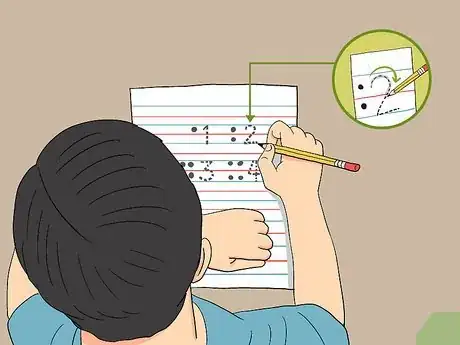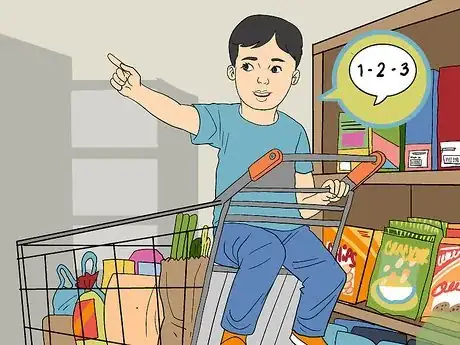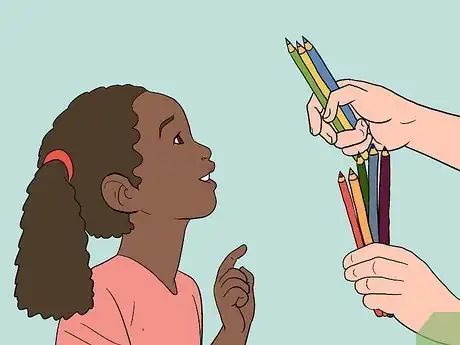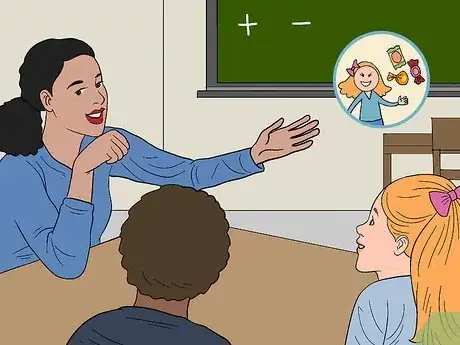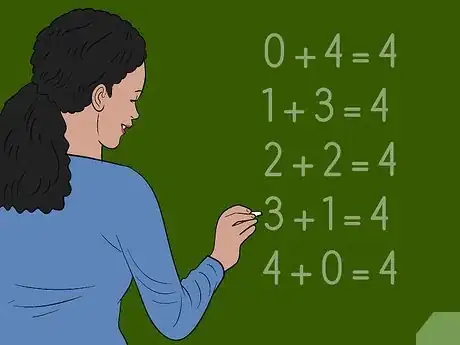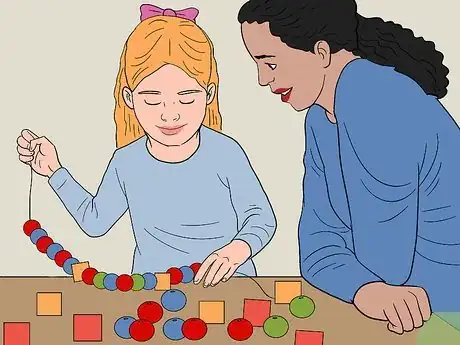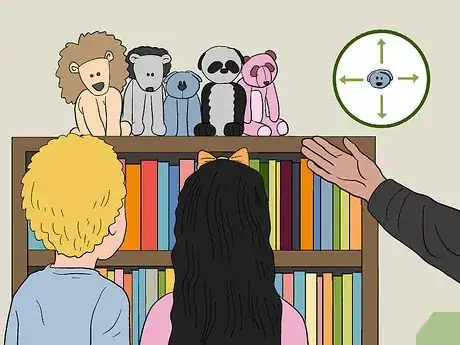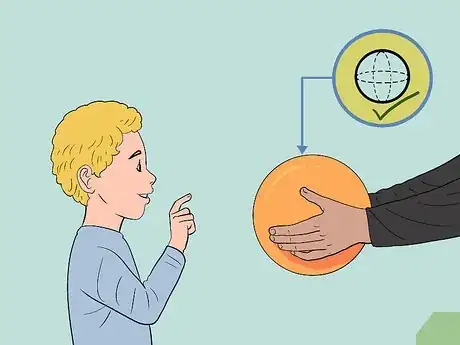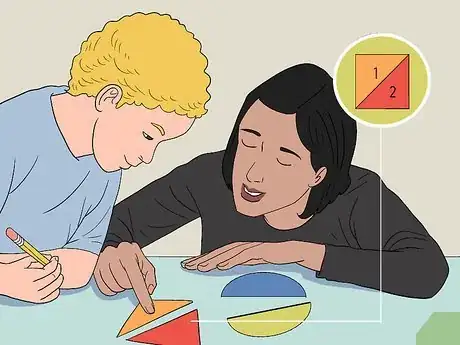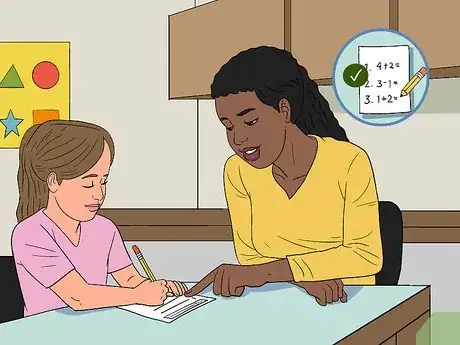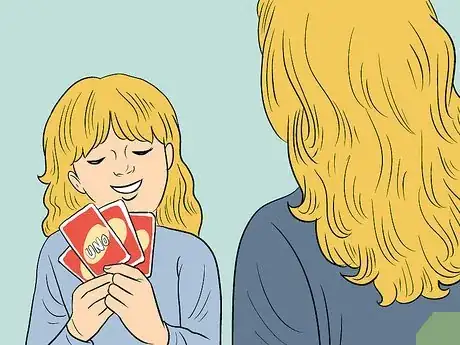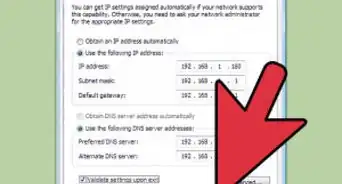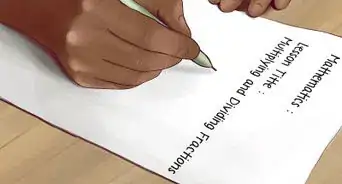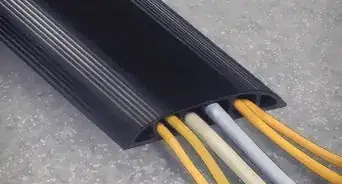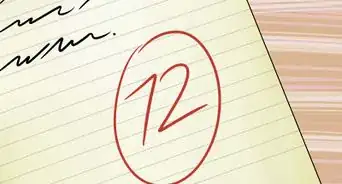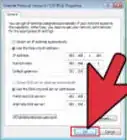This article was co-authored by Soren Rosier, PhD. Soren Rosier is a PhD candidate at Stanford's Graduate School of Education. He studies how children teach each other and how to train effective peer teachers. Before beginning his PhD, he was a middle school teacher in Oakland, California, and a researcher at SRI International. He received his undergraduate degree from Harvard University in 2010.
There are 15 references cited in this article, which can be found at the bottom of the page.
This article has been viewed 17,419 times.
Teaching math to kindergarteners is all about introducing the basics and making math fun so they will want to keep practicing and progressing. Start by helping the child to recognize numbers using grouped objects and teaching them how the numbers progress with counting activities. Then, help them to understand the basics of addition, subtraction, and geometry with simple equations and shape activities. There are also several general strategies that may help your kindergartener learn math, such as reading books, playing games, and using manipulatives.
Steps
Recognizing Numbers and Counting
-
1Group and move objects together to demonstrate numbers. To do this with your kindergartener, make dots on a piece of paper or place physical objects into groups, such as checkers, pennies, or blocks. Create different number groups in a sequence, such as 1, 2, 3, 4, etc. Then, look at the groups with your kindergarteners and ask them how many are in each group. Help them figure out the number in each group by counting them yourself and saying the number.[1]
- Once a child can look at a group of up to 3 objects or images and immediately recognize the number without counting them, they have mastered this concept.
-
2Practice writing numbers on a piece of paper or whiteboard. Any time you draw dots on a piece of paper and ask your kindergartener to tell you how many are there, write the number next to the dots. Then, have your kindergartener copy the number you just wrote and say what it is again. Once they learn all of the numbers, ask them to start writing them next to groups of dots.[2]
- You can also get pre-made worksheets that have numbers your kindergartener can trace for practice.
Advertisement -
3Count out loud when you touch or point to different objects. Do this as you go about your day, such as while grocery shopping, cooking, or folding laundry. Also, encourage your kindergartener to count any objects that they encounter. For example, give them a pile of toys and ask them to count them out loud, or ask them to tell you how many eggs are left in the carton.[3]
- You can also show the progression of numbers in everyday objects, such as by pointing out the date on a calendar.
- The child is ready to progress in math once they understand how to count objects in a progressive fashion, such as “One, two, three, four, etc.”
Tip: Make sure to offer praise to your kindergartner and avoid criticizing them or scolding them for making a mistake. If your kindergartener skips a number while counting or says the wrong number, say something like, “Nice try! But there are actually 5 ducks, see 1, 2, 3, 4, and 5!”
-
4Compare everyday objects using words like less, more, and same. Comparisons will help your kindergartener understand the progression of numbers, so start using these words often when you show them different groups of numbers. Say things like, “This group of dots has 1 more than that group,” or “This pile of pencils has 1 less than that group,” or “These 2 piles of apples have the same amount.” Then, ask your kindergartener to tell you how many are in each pile.[4]
- Once your kindergartner can say how many more or less a group of objects has compared to another group, they have mastered this concept.
- Increase the difficulty when your kindergartener is ready by asking them which group has 2, 3, 4, or 5 more than another group. You can also repeat this exercise when you progress to teen numbers.
-
5Start with small numbers, such as 1, 2, and 3, 4, and 5. Progress to working with larger numbers only after the child has grasped basic concepts using small numbers. Use small number groups of objects, write smaller numbers for practice first, and count out loud to 5 with kindergarteners to start. Don’t teach teen numbers, such as 10, 11, 12, 13, etc., until your kindergartener has mastered numbers 1-9.[5]
Adding, Subtracting, and Measuring
-
1Tell a story about addition or subtraction. Stories will help to keep your kindergartener’s attention and make understanding addition and subtraction easier. [6] Incorporate the child’s name and things that interest them into these stories whenever possible to help get their attention.[7]
- For example, you might say something like, “If Lucy has 2 pieces of candy, and Erik gives her 1 more, how many pieces of candy does Lucy have?”
-
2Write out all the different ways of representing a number. While kindergarteners don’t need to know how to solve equations at this point, you can start to introduce the concept of equations. Write out all the ways of representing a number through adding other numbers together.[8]
- For example, to represent the number 4, you could write, “0+4=4, 1+3=4, 2+2=4, 3+1=4, and 4+0=4.”
-
3Have the children measure classroom objects with a ruler. Show kindergarteners the numbers on a ruler and show them how to use it to measure things. Then, encourage them to use it to measure different objects in your classroom.[9]
- Make a scavenger hunt out of measuring things by putting the kids into teams and telling them what to find and measure, such as a crayon, a picture, or a specific toy.
-
4Teach the kindergarteners to spot patterns by arranging beads and blocks. Use different color beads and arrange them into a color pattern or arrange different shaped blocks into a shape pattern. Ask kindergarteners to identify the pattern and then recreate it using their own beads and blocks.[10]
- Increase the complexity of the patterns gradually. For example, you might start with a colored bead pattern of red, blue, red, blue, etc. Then, increase the complexity to red, green, blue, red, green blue, etc.
Teaching Geometry Basics
-
1Use directional terms to describe the world around your kindergartener. Directional terms will help your kindergartener understand the relationships between objects and the physical world, which is an important basic geometry concept. Model this by using spatial terms to describe where items are located, such as above, below, next to, around, and behind. Then, encourage your kindergartener to do the same.[11]
- For example, you might say something like, “Your stuffed animals are on top of your bookshelf,” or “The shoes are in the shoe rack,” or “The big pot is under the counter.”
-
2Encourage the child to point out 2-D and 3-D shapes that they encounter. This will give the child practice with recognizing specific shapes. Model this for the child first by pointing out shapes that you encounter or draw and saying what they are. Then, ask the child to do the same.[12]
- Try saying something like, “Our refrigerator is the shape of a rectangle,” or “This ball is a sphere.”
- Start with simple shapes, such as square, rectangle, triangle, and circle, then progress to more advanced ones, such as pentagon, hexagon, star, and heart.
Tip: Ensure that your kindergartener understands 2-D shapes, such as square, circle, and triangle, before progressing to 3-D shapes, such as sphere, cube, and cone.
-
3Count the sides and angles of different shapes. Whenever you encounter a shape, have your kindergartener examine it more closely. Ask them to tell you how many sides and angles the shape has. Model this for them by counting the sides of a new shape out loud and then ask them to do the same when they encounter a similar shape.[13]
- For example, you might say, “This square has 4 sides and 4 angles,” or “This circle has no angles and only 1 side because it’s round.”
- Start by doing this with simple shapes, such as squares, triangles, rectangles, and circles. Then, move on to hexagons, pentagons, octagons, and stars. You can do this with 3-D objects as well, such as by examining a block or cube and counting the sides and angles it has.
-
4Show the child how to separate and combine shapes to form new ones. Provide the child with examples first, such as by showing them how you can cut a square in half to get 2 rectangles or combine 2 triangles to make a square. Then, give the kindergartener paper cut into different shapes and ask them to separate and combine the shapes to form new ones.[14]
- For example, you might say, “Put the triangles together so they make a square,” or “Cut the circle in half to make 2 moon shapes.”
Choosing Tools for Teaching Math
-
1Read books that feature numbers and other math concepts. Reading books that include counting, addition, subtraction, and shapes is a great way to introduce basic math concepts. Read aloud with your kindergartener and ask them questions about the pictures to help them remember the concepts.[15]
- For example, you might say something like, “Look, there’s 5 ducks here, but then this one goes away. How many ducks are there now?”
- Make sure to choose age appropriate counting books to make it easier for your kindergartener to understand.
-
2Use worksheets and workbooks to practice math concepts. You can find many free math worksheets online or purchase a workbook that includes progressive lessons and worksheets. Have your kindergartener complete 1 or more worksheets daily to solidify concepts they’re working on.[16]
- For example, you could use a counting practice worksheet to help your kindergartener recognize numbers and see how they progress.
- Make sure to include a variety of different types of worksheets to keep your kindergartener engaged with the material.
-
3Do math outside of the classroom as you go about your day. Math is everywhere! You can teach math concepts while shopping for groceries, doing household chores, or during a family outing. Look for ways that you can reinforce and practice math concepts with your kindergartener in your daily activities.[17]
- For example, you could ask your kindergartner to pick out 2 oranges for you at the grocery store, have them count out $3 to pay for a gallon of milk.
- Or, if you go to the zoo, ask your kindergartner to count the number of animals they see in an enclosure.
Tip: Having your kindergartener wear an analog watch is another good way to introduce numbers and time-telling. Ask them to tell you what number the big hand is pointing to at random times during the day.
-
4Use games to help reinforce concepts and make math fun.[18] Playing games with your kindergartener is another great way to keep them interested in math and associate it with fun. Choose age-appropriate games that you can play with your kindergartener and emphasize math concepts when you play, such as by saying the numbers out loud and encouraging your kindergartener to do the same. Some good games to play with your child include:[19]
- Board games, such as Candyland or Chutes and Ladders.
- Domino games, such as Train.
- Card games, such as Uno and Go Fish.
-
5Incorporate a variety of manipulatives to make math hands-on. Manipulatives are physical items that you can use to teach your child math concepts. These include items they can hold in their hands, such as checkers, clay, and pennies.[20] Some ways you can incorporate manipulatives include:[21]
- Grouping physical objects to represent numbers.
- Sorting physical objects by color, size, shape, or material.
- Molding clay into different shapes.
Expert Q&A
Did you know you can get expert answers for this article?
Unlock expert answers by supporting wikiHow
-
QuestionHow can I keep kindergarteners excited about math?
 Soren Rosier, PhDSoren Rosier is a PhD candidate at Stanford's Graduate School of Education. He studies how children teach each other and how to train effective peer teachers. Before beginning his PhD, he was a middle school teacher in Oakland, California, and a researcher at SRI International. He received his undergraduate degree from Harvard University in 2010.
Soren Rosier, PhDSoren Rosier is a PhD candidate at Stanford's Graduate School of Education. He studies how children teach each other and how to train effective peer teachers. Before beginning his PhD, he was a middle school teacher in Oakland, California, and a researcher at SRI International. He received his undergraduate degree from Harvard University in 2010.
PhD in Education Candidate, Stanford University
References
- ↑ https://ies.ed.gov/ncee/wwc/Docs/practiceguide/early_math_pg_111313.pdf
- ↑ https://www.youtube.com/watch?v=62l6HFjIXns&t=1s
- ↑ https://ies.ed.gov/ncee/wwc/Docs/practiceguide/early_math_pg_111313.pdf
- ↑ https://ies.ed.gov/ncee/wwc/Docs/practiceguide/early_math_pg_111313.pdf
- ↑ https://www.youtube.com/watch?v=PHp1BwG_cU8
- ↑ https://www.edutopia.org/blog/ways-help-students-understand-math-matthew-beyranevand
- ↑ https://learn.khanacademy.org/khan-academy-kids/
- ↑ https://www.youtube.com/watch?v=kxoydi6ElQQ
- ↑ https://www.readingrockets.org/article/reading-and-understanding-written-math-problems
- ↑ https://www.youtube.com/watch?v=PHp1BwG_cU8
- ↑ https://www.readingrockets.org/article/components-effective-mathematics-instruction
- ↑ https://files.eric.ed.gov/fulltext/EJ1357339.pdf
- ↑ https://www.youtube.com/watch?v=MnOKD_I6vSU
- ↑ https://www.youtube.com/watch?v=MnOKD_I6vSU
- ↑ https://tkcalifornia.org/teachers/mathematics/
- ↑ https://matheasily.com/math-worksheets-kindergarten.html
- ↑ https://tkcalifornia.org/teachers/mathematics/
- ↑ Soren Rosier, PhD. PhD in Education Candidate, Stanford University. Expert Interview. 1 May 2019.
- ↑ https://www.edutopia.org/topic/game-based-learning/
- ↑ Soren Rosier, PhD. PhD in Education Candidate, Stanford University. Expert Interview. 1 May 2019.
- ↑ https://www.youtube.com/watch?v=2Q8gAflUHSA

